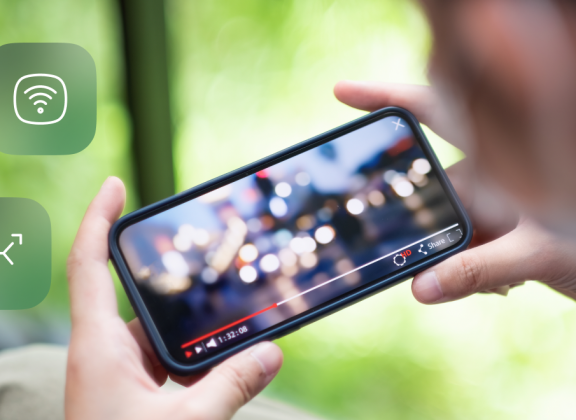At home on an unlimited fiber connection, data usage isn’t something most people worry about. But the moment you step out of Wi-Fi coverage—say, heading to the countryside or traveling for work—watching HD and especially 4K video can drain your data plan quickly. Here’s a practical guide to keeping your picture quality high while keeping your data usage under control.
Start by Understanding Your Data Plan
Before changing any settings, find out exactly how much data your plan includes and when your provider might throttle your speeds. Many mobile operators start slowing connections after 30 or 50 GB, and speeds like 1–3 Mbps just won’t cut it for 4K streaming. Use your provider’s app or online portal to check your current data limits and throttling policies, which will help you tailor your strategy.
Choose the Right Codec and Adjust Bitrate
Whenever possible, go with H.265/HEVC instead of H.264. HEVC delivers the same visual quality while using 30–40% less data. If your device supports hardware decoding for H.265, enable it in your app’s playback settings.
Don’t just lower resolution—reduce the bitrate too. Most Full HD content plays smoothly at 3–4 Mbps with HEVC, compared to 6–8 Mbps on default settings. In apps like OTT Navigator, VLC, or TiviMate, you can manually set limits on bitrate and choose adaptive stream quality levels.
Enable Adaptive Bitrate Streaming
Many IPTV and on-demand services now stream in variable quality chunks. Turn on adaptive bitrate streaming and set a bandwidth target—say, 2 to 5 Mbps. Your player will automatically adjust stream quality depending on your current signal, helping you avoid downloading full-quality streams when your connection doesn’t require it.
Reduce Frame Rate and Avoid HDR
High frame rates mean higher data use. A stream at 60 fps uses nearly double the data of one at 30 fps. For shows and movies, 25–30 fps is usually more than enough. In your device’s settings, set the refresh rate to 30 Hz or use “Auto” mode.
HDR video also uses more data due to its 10-bit color depth. Unless you’re watching something where HDR really matters—like a movie or nature documentary—switch to the standard SDR version. On a phone screen, you probably won’t notice the difference.
Tune Buffer Settings for Your Connection
A large video buffer (10–15 seconds) can help with unstable Wi-Fi, but it also causes the player to pre-download extra data. If you’re on LTE, set the buffer to 3–5 seconds for HD, or 8 seconds for 4K. This ensures the player only loads what’s necessary and avoids excess data usage.
Download When You Can
Many video services allow you to temporarily download movies and shows. Take advantage of this by preloading your content over Wi-Fi, then watching offline later without using any mobile data. Just remember to delete downloaded files when you’re done to save space.
Match Your Signal Band and Hardware
Not all 4G frequencies are created equal. Bands around 2600 MHz offer high speeds but weak indoor performance. Lower bands like 1800 MHz or 800 MHz give better coverage in buildings, though at slower speeds. If signal strength is a problem, using an LTE modem with a MIMO antenna can stabilize your connection and help avoid having to reload content due to buffering.
Keep an Eye on Data Usage
On Android 11 and newer, go to “Mobile Data → Data Warning” to set a monthly cap. Your phone will alert you before you go over. On iPhones, turn on “Low Data Mode” to automatically scale back background and streaming data use. Devices like MAG or Dune set-top boxes can use third-party tools like NetSpeed Monitor to show live data usage on-screen.
Set Smart Router Rules
If your mobile connection is shared via a router, set up Quality of Service (QoS) rules. For example, reserve 6 Mbps for IPTV traffic and cap all other devices at 2 Mbps. That way, a laptop downloading an update won’t kill your stream.
Cutting back on data use while streaming isn’t hard. Stick with HEVC, limit your bitrate and frame rate, fine-tune your buffer, and use Wi-Fi to cache content when possible. Even with a 20 Mbps mobile plan, you can comfortably stream two HD channels or one 4K video without interruptions—all while preserving your data for the rest of the month.
